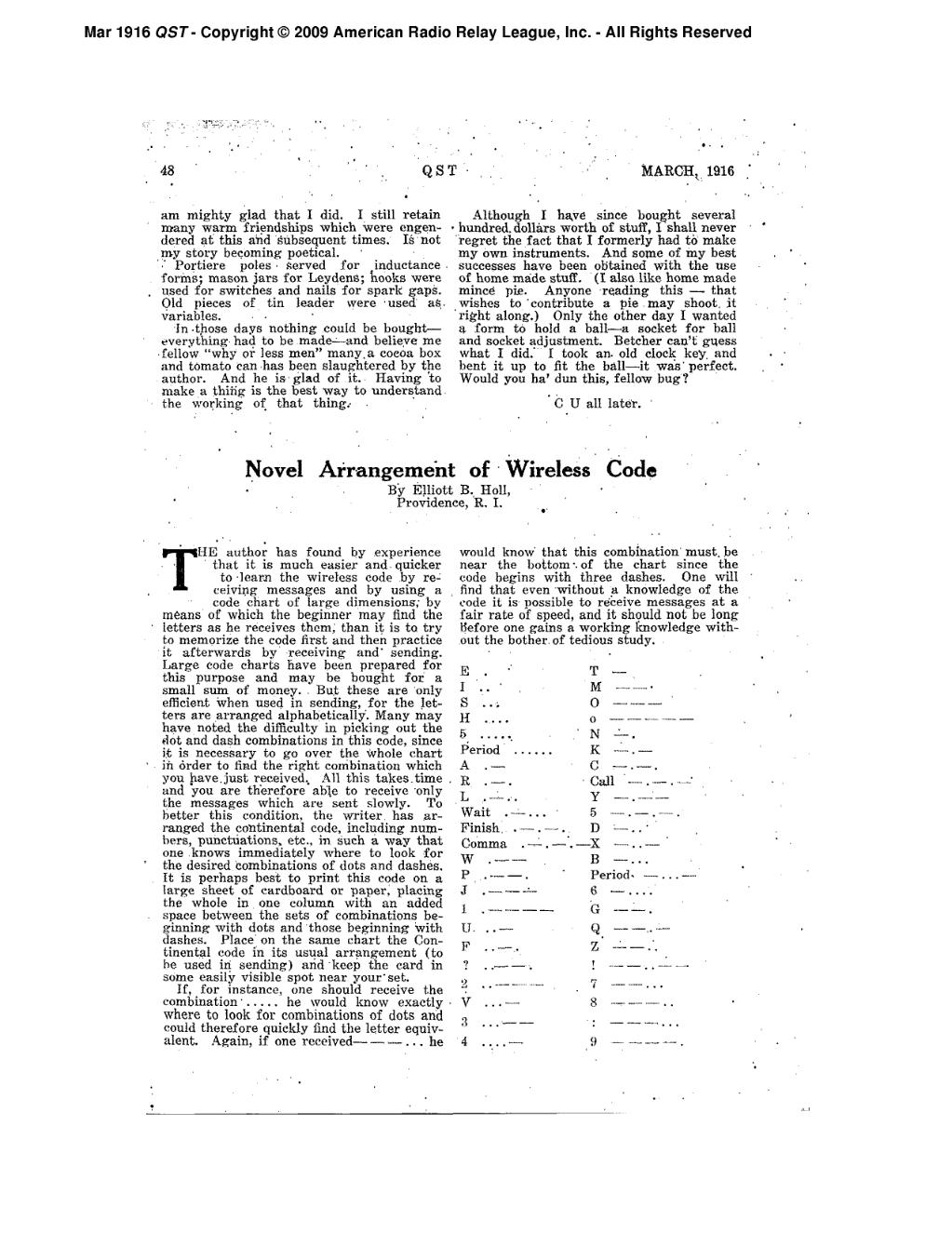| am mighty glad that I did. I still retain many warm friendships which were engendered at this and subsequent times; Is not my story becoming poetical.
Portiere poles served for inductance forms; mason jars for Leydens; hooks were used for switches and nails for spark gaps. Qld pieces of tin leader were used as variables. In those days nothing could be bought—everything had to be made—and believe me fellow “why or less men” many a cocoa box and tomato can has been slaughtered by the author. And he is glad of it. Having to make a thing is the best way to understand the working of that thing. |
Although I have since bought several hundred, dollars worth of stuff, I shall never regret the fact that I formerly had to make my own instruments. And some of my best successes have been obtained with the use of home made stuff. (I also like home made mince pie. Anyone reading this — that wishes to contribute a pie may shoot it right along.) Only the other day I wanted a form to hold a ball—a socket for ball and socket adjustment. Betcher can’t guess what I did. I took an old clock key, and bent it up to fit the ball—it was perfect. Would you ha’ dun this, fellow bug? C U all later. |
Novel Arrangement of Wireless Code
By Elliot B. Holl,
Providence, R. I.
| THE author has found by experience that it is much easier and quicker to learn the wireless code by receiving messages and by using a code chart of large dimensions; by means of which the beginner may find the letters as he receives them; than it is to try to memorize the code first and then practice it afterwards by receiving and sending. Large code charts have been prepared for this purpose and may be bought for a small sum of money. But these are only efficient when used in sending, for the letters are arranged alphabetically. Many may have noted the difficulty in picking out the dot and dash combinations in this code, since it is necessary to go over the whole chart in order to find the right combination which you have just received, All this takes time and you are therefore able to receive only the messages which are sent slowly. To better this condition, the Writer has arranged the continental code, including numbers, punctuations, etc., in such a way that one knows immediately where to look for the desired combinations of dots and dashes. It is perhaps best to print this code on a large sheet of cardboard or paper, placing the whole in one column with an added space between the sets of combinations beginning with dots and those beginning with dashes. Place on the same chart the Continental code in its usual arrangement (to be used in sending) and keep the card in some easily visible spot near your set.
If, for instance, one should receive the combination ..... he would know exactly where to look for combinations of dots and could therefore quickly find the letter equivalent. Again, if one received — — — . . . he |
would know that this combination must be near the bottom of the chart since the code begins with three dashes. One will find that even without a knowledge of the code it is possible to receive messages at fair rate of speed, and it should not be long before one gains a working knowledge with out the bother of tedious study.
|
